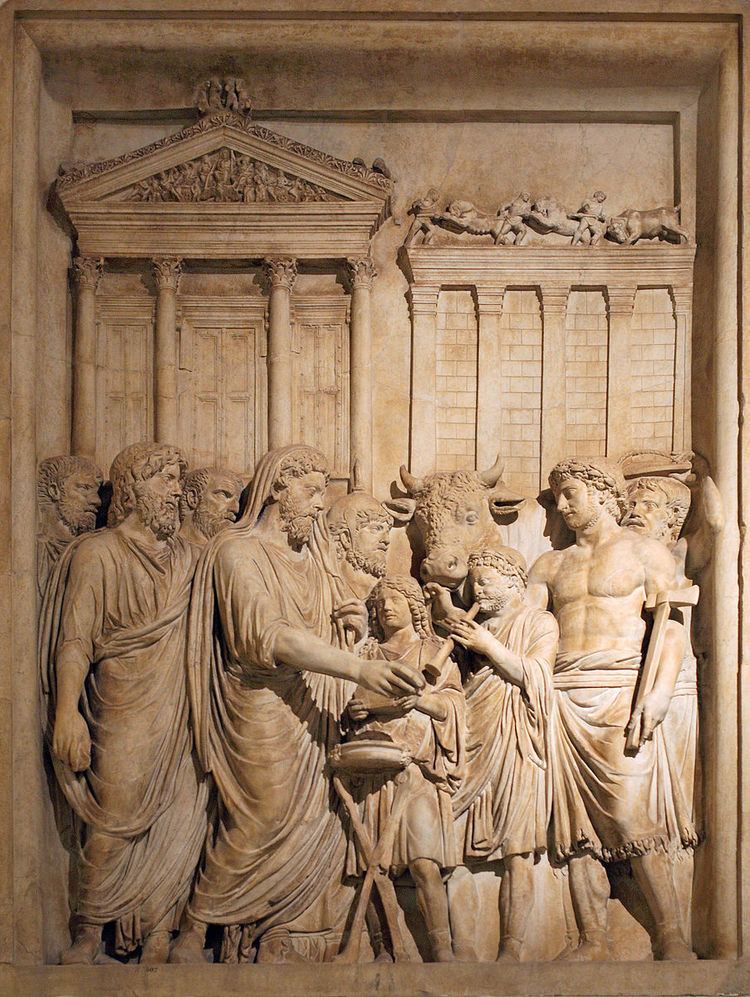 | ||
Address Herbert-von-Karajan-Platz 8, 5020 Salzburg, Austria Similar Salzburg Cathedral, StMarkus Kirche am Ursulinen, Stiftskirche Sankt Peter Salzburg, Salzburg Führung ‑ Wolfgang, Parish Church St Andrä | ||
F chse sacellum kungs remix
In ancient Roman religion, a sacellum is a small shrine. The word is a diminutive from sacer ("belonging to a god"). The numerous sacella of ancient Rome included both shrines maintained on private properties by families, and public shrines. A sacellum might be square or round.
Contents
- F chse sacellum kungs remix
- F chse sacellum hazem beltagui pres h4z3 remix out 23 06 14
- Cult maintenance of sacella
- List of public sacella and sacraria
- Provincial and later usage
- References
Varro and Verrius Flaccus describe sacella in ways that at first seem contradictory, the former defining a sacellum in its entirety as equivalent to a cella, which is specifically an enclosed space, and the latter insisting that a sacellum had no roof. "Enclosure," however, is the shared characteristic, roofed over or not. "The sacellum," notes Jörg Rüpke, "was both less complex and less elaborately defined than a temple proper."
The meaning can overlap with that of sacrarium, a place where sacred objects (sacra) were stored or deposited for safekeeping. The sacella of the Argei, for instance, are also called sacraria. In private houses, the sacrarium was the part of the house where the images of the Penates were kept; the lararium was a form of sacrarium for the Lares. Both sacellum and sacrarium passed into Christian usage.
Other Latin words for temple or shrine are aedes, aedicula, fanum, delubrum and templum, though this last word encompasses the whole religiously sanctioned precinct.
F chse sacellum hazem beltagui pres h4z3 remix out 23 06 14
Cult maintenance of sacella
Each curia had its own sacellum overseen by the celeres, originally the bodyguard of the king, who preserved a religious function in later times. These were related to the ritual of the Argei, but probably there were other rites connected with these sacella.
A case tried in September 50 BC indicates that a public sacellum might be encompassed by a private property, with the expectation that it remain open to the public. It was alleged that the defendant, Ap. Claudius Pulcher, a censor at the time, had failed to maintain public access to a sacellum on his property.
List of public sacella and sacraria
The following is an incomplete list of deities or groups of deities who had a known sacellum or sacrarium in the city of Rome.
Provincial and later usage
In a manuscript from the Abbey of Saint Gall, sacellum is glossed as Old Irish nemed, Gaulish nemeton, originally a sacred grove or space defined for religious purposes, and later a building used for such. In Christian architecture, rooflessness ceases to be a defining characteristic and the word may be applied to a small chapel marked off by a screen from the main body of a church, while an Italian sacello may alternatively be a small chapel or oratory which stands as a building in its own right.
